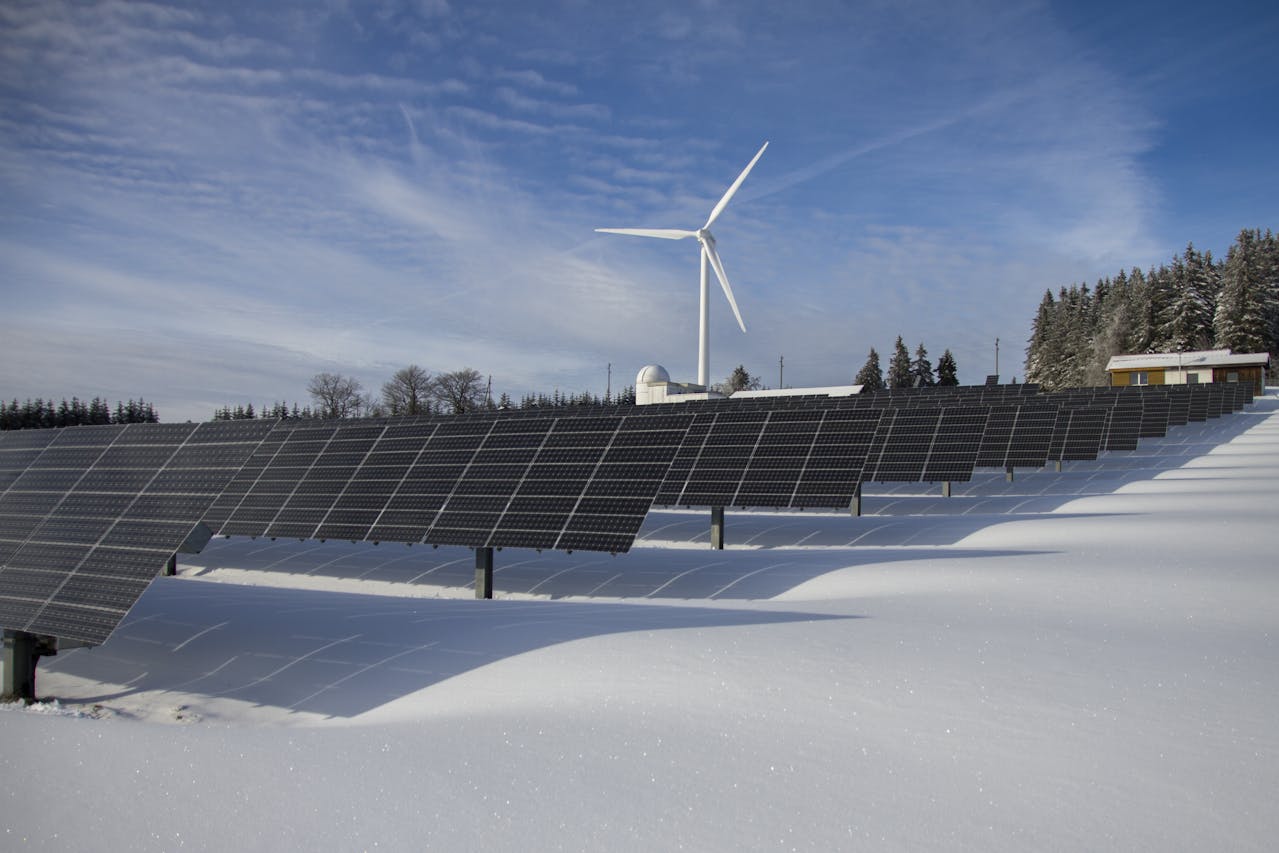Myths and Facts About Solar Energy in Winter
Many people assume that solar panels become ineffective during the winter months. The assumption is that short days, snow cover and cloudy weather significantly reduce the solar output. This is only partially true. While it is a fact that solar panels generate less energy in the winter due to fewer daylight hours, it’s a myth that they don’t work at all. The truth is that solar panels can still be effective in winter. Snow can reflect light and potentially increase the effectiveness of panels, and cooler temperatures can improve panel efficiency.
How Temperature Affects Solar Panel Efficiency
Contrary to popular belief, solar panels work more efficiently in cold weather. High temperatures can diminish the efficiency of solar cells, causing a decrease in power output. In winter, the cooler temperatures can actually enhance performance, although this is often offset by shorter days and less intense sunlight. The optimal temperature for most solar panels is around 25 degrees Celsius, and anything above can cause the output to drop.
The Role of Anti-Reflective Coatings in Winter Solar Performance
Anti-reflective coatings play a crucial role in the performance of solar panels during winter. These coatings are designed to reduce the loss of light that occurs due to reflection, allowing more photons to enter the solar cell where they can be converted into electricity. In winter, when the sun is at a lower angle, the effectiveness of these coatings becomes even more significant. They help capture more light during the shorter daylight hours, enhancing overall winter performance.
Solar Power Generation on Overcast Winter Days
On overcast winter days, solar panel output understandably declines. However, solar panels can still generate electricity from diffused light that penetrates the clouds. Although the power generation is not at its peak, modern solar panels are quite effective at capturing indirect sunlight. Thus, even on cloudy winter days, panels can produce a substantial amount of electricity, albeit less than on sunny days.
Installation Tips for Maximising Winter Solar Yield
Installation plays a pivotal role in maximising solar yield during the winter. Panels should be installed at an angle that corresponds with the winter sun’s path to capture the maximum sunlight possible. Generally, steeper angles are better in winter to both capture more light and to facilitate the shedding of snow which might otherwise cover the panels and reduce their effectiveness. Solar trackers can also be used to align the panels with the sun’s position, although these come at additional costs and complexity.
Financial Incentives for Solar Panel Owners in Winter
Many countries offer financial incentives to encourage the use of solar panels. These incentives often come in the form of feed-in tariffs or net metering whereby solar panel owners are credited for the electricity they add to the grid. In winter, despite reduced output, these incentives remain, making solar energy generation still economically advantageous.
Comparative Analysis of Geographic Winter Solar Output
Geographical location significantly affects solar output in winter. Regions closer to the equator experience less variation in daylight hours and sun intensity throughout the year. In contrast, locations at higher latitudes see significant reductions in winter solar yield due to shorter days and lower sun angles. However, even in these areas, solar can be a viable option with proper installation and system sizing.
The Potential of Bifacial Solar Panels in Snowy Conditions
Bifacial solar panels, which collect sunlight from both sides, offer a unique advantage in snowy conditions. The albedo effect, where light reflects off the snow onto the backside of the panels, can increase power generation. These panels can harness the reflected light and have the potential for higher energy yield in winter, albeit with a higher initial cost than traditional monofacial panels.
Long-Term ROI of Solar Panels Including Winter Months
When considering the long-term return on investment (ROI) of solar panels, including the winter months is essential. Although there’s less solar production in winter, systems are generally designed to meet annual power demands rather than monthly ones. Over the course of the year, the summer months compensate for the winter’s lower production, leading to a positive ROI over the life of the system, typically 20-25 years.
Insulating Solar Equipment Against the Cold
While solar panels themselves do not require insulation, other components of the solar system, such as the inverter and batteries (if present), may benefit from protection against the cold weather. Proper insulating materials can protect these components from freezing temperatures, which might otherwise reduce their lifespan and efficiency. This, in turn, ensures the solar system remains efficiently operational during winter months. In conclusion, solar panels do work in the winter, and with the right installation techniques, maintenance, and equipment, they can continue to provide significant energy output. Anti-reflective coatings, financial incentives, geographic location considerations, bifacial panels, and system insulation all contribute to the sustained effectiveness of solar energy systems throughout the colder part of the year. The long-term ROI considering winter performance continues to make solar panels a worthwhile investment for those looking to embrace renewable energy sources.





